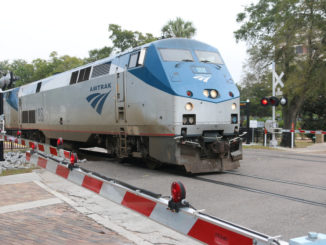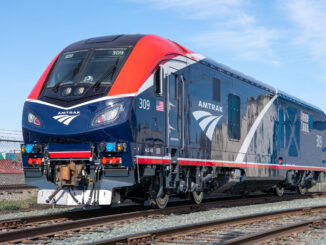WASHINGTON — The National Transportation Safety Board has determined that the probable cause of the derailment of a Chicago commuter transit train in the summer of 2006 resulted from the Chicago Transit Authority’s ineffective management and oversight of its track inspection and maintenance program and its system safety program, which resulted in unsafe track conditions.
At 5:06 p.m. (CDT) on July 11, 2006, the last car of northbound Chicago Transit Authority train No. 220 derailed in the subway between Clark/Lake and Grand/Milwaukee stations in downtown Chicago. After the train came to a stop, electrical arcing between the last car and the 600-volt direct current third rail generated a significant amount of smoke, creating hazardous conditions.
Of the approximately 1,000 passengers on-board the eight-car rapid transit train, 152 persons were treated and transported from the scene, including three firefighters and one CTA supervisor. The majority of injuries were due to smoke inhalation.
There were no fatalities. Total damage exceeded $1 million.
The Safety Board determined that the lateral forces generated as the train moved through a curve in the subway tunnel forced one rail outward, causing a wheel to drop into the interior section of the track bed. The weakness in the accident section of the rail was due to a series of corroded, worn, bent and broken fastener devices that were no longer securely anchoring the track to the half-ties on the tunnel floor.
The Board pointed to failures within CTA and the oversight agencies as the factors most responsible for the derailment.
“We have seen far too many accidents in which the authorities responsible for overseeing the safe operation of a transportation system fail to get the job done,” said NTSB Chairman Mark Rosenker. “This accident would never have occurred if the oversight agencies involved were more diligent in exercising their responsibilities.”
Contributing to the accident were failures within two higher-level oversight agencies. The State of Illinois’s Regional Transportation Authority was cited for failure to require that action be taken by the Chicago Transit Authority to correct unsafe track conditions. And at the national level, the Federal Transit Administration was found to be ineffective in its oversight of the Regional Transportation Authority.
In its final report, the Board stated that a deficient safety culture existed at the CTA that allowed the track infrastructure to deteriorate to an unsafe condition, which ultimately resulted in the derailment. In particular, the investigation found “a series of latent conditions and active failures at many levels throughout the CTA corporate structure, which is characteristic of an organizational accident.”
“There were hundreds of missing track inspection records important to the safety of the rail system, yet no one at CTA noticed,” said Rosenker. “And the oversight agencies, FTA and RTA, failed to hold the Chicago Transit Authority accountable on numerous levels. Such a series of cascading failures would represent a serious challenge to the safety of any transportation system.”
As a result of the investigation, the Board approved a total of 14 safety recommendations, which will be issued to the Federal Transit Administration, the State of Illinois, the Regional Transportation Authority, the Chicago Transit Board, and the Chicago Transit Authority.
— Special to Railfanning.org News Wire




